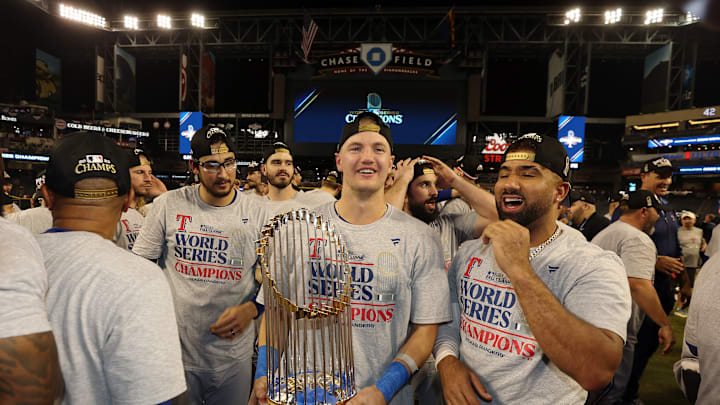The Texas Rangers won the World Series 12 days ago now. It was a joyous day that would not have happened if not for several unforgettable moments. It is moments that as fans we will hopefully be able to tell our children and grandchildren about. There are also other moments that are part of every magical run. These are moments that in time will probably be forgotten. They are moments though that made the great unforgettable moments possible. Before we get too far away from this time I wanted to look at these moments that will not be on the highlight videos and why they were significant to the championship run.
1) Nathaniel Lowe's 15 pitch line-out in game three of the ALDS
Let us set the situation leading into this at-bat for Nathaniel Lowe. The score was 1-0 after a Corey Seager home run in the first inning of game three. Texas is looking to clinch the series in their first home game of the playoffs. Lowe came up for his first at-bat against Dean Kremer. The Orioles needed length from Kremer having used a lot of their bullpen in games one and two of the series.
Lowe fell behind 0-2 on two called strikes on four-seam fastballs. Then he went to work. He refused to strike out. He fouled off the next pitch. Lowe did not chase the next two pitches that were called balls. He fouled off the sixth pitch. Took ball three on pitch seven. Lowe then fouled off the next seven pitches. Kremer was working fastball, cutters, and sinkers and Lowe just kept fouling them off. The crowd got into it and the team started encouraging him. Finally on pitch 15 a sinker down and away Lowe lined out to the left fielder for out number one.
Kremer was at 22 pitches coming into the second and after facing Lowe it shot up to 37. There was residual effect as a result of the Lowe at-bat. The Rangers started a rally that saw them score five runs after that out. Mitch Garver had a two-run double to make it 3-0 and Adolis Garcia followed that up with a three-run home run to make it 6-0. That was the end of the day for Dean Kremer. The Orioles really need four or five innings and they ended up with 1 2/3 innings. I do not think it is any coincidence this all happened after Lowe's 15 pitch at-bat. The game was effectively over after that inning. Texas would end up winning 7-1 and that included a home run from Nathaniel Lowe later in this game.
